|
|
|
Tauris
|
The Napoleonic Wars were the first truly global conflict. The Royal Navy was a key player in the wars and, at the cessation of hostilities, Britain emerged as the only naval power capable of sustained global hegemony. Many of the most iconic battles of this era were fought at sea — from the Battle of the Nile in 1798 to Nelson's momentous victory at Trafalgar in October 1805. This book looks at the history of the Royal Navy during the French Revolutionary and Napoleonic Wars from a wide perspective, examining the strategy, operations and tactics that led to Britain ending the wars in 1815 as the dominant naval force. It examines the logistics of war across a range of operations: battle, blockade, commerce protection and exploration and, by picking out key figures in the narrative, provides a unique view of the 'experience' of conflict across all decks. Through an exploration of the relationship between the Navy, trade and empire, Martin Robson shows the Royal Navy made to Britain's rise to global hegemony through the nineteenth century Pax Britannica. |
|
One of the most famous and tortured romances in history — between Elizabeth I, Queen of England, and Robert Devereux, Earl of Essex — began in 1587, when she was 53 and he was 19. Their passionate affair continued for five years, until Essex was beheaded for treason in 1601. In a fast-paced succession of brilliantly-rendered scenes, Lytton Strachey portrays Elizabeth and Essex's compelling attraction for each other, their impassioned disagreements, and their mutual struggle for power, which culminated so tragically — for both of them. Alongside the doomed love affair, Strachey pins colorful portraits of the leading characters and influential figures of the time: Francis Bacon, Walter Raleigh, Robert Cecil, and other members of her glittering court who fought to assert themselves in a kingdom and a country defined by Elizabeth's incomparable reign. Strachey here illuminates, in spellbinding prose, one of the most poignant affairs in history alongside the glamor and intrigue of the Elizabethan era. |
|
In 2012, Britain and the Commonwealth celebrate the 60th anniversary of Elizabeth II's accession to the throne. The royal family have overcome a number of obstacles in its recent history, yet today it appears to be riding on a wave of popular affection. But has Elizabeth II's reign been a good thing for the UK? Or have the style, rituals and underlying culture of the modern monarchy held Britain back from its potential in the 21st century world? In this groundbreaking and thought-provoking new book, Stephen Haseler argues that the class structure which the monarchy has continued to encourage has retained outdated, yet seemingly entrenched, attitudes which have negatively affected Britain's economy, capacity to innovate and international stature. He provides an alternative political and social history of modern Britain which will be a provocative yet entertaining and informative read in the Queen's anniversary year. |
|
What turned Adolf Hitler, a relatively normal and apparently unexceptional young man, into the very personification of evil? To answer this question, acclaimed historian Brigitte Hamann has turned to the critical, formative, years that the young Hitler spent in Vienna. As a failing, bitter, and desperately poor artist, Hitler experienced only the dark underbelly of Vienna, which was seething with fear, racial prejudice, anti-Semitism and conservatism. Drawing on previously untapped sources — from personal reminiscences to the records of shelters where Hitler slept — Hamann vividly recreates the dark side of fin de siecle Vienna and paints the fullest and most disturbing portrait of the young Hitler to date. |

|
The Spanish Armada conjures up images of age-old rivalries, bravery and treachery. However the same Spanish monarch who sent the Armada to invade England in 1588 was, just a few years previously, the King of England and husband of Mary Tudor. This important new book sheds new light on Philip II of Spain, England's forgotten sovereign. Previous accounts of Mary's brief reign have focused on the martyrdom of Protestant dissenters, the loss of English territory, as well as Mary's infamous personality, meaning that her husband Philip has remained in the shadows. In this book, Harry Kelsey uncovers Philip's life — from his childhood and education in Spain, to his marriage to Mary and the political manoeuvrings involved in the marriage contract, to the tumultuous aftermath of Mary's death which ultimately led to hostile relations between Queen Elizabeth and Philip, culminating in the Armada. Focusing especially on the period of Philip's marriage to Mary, Kelsey shows that Philip was, in fact, an active King of England and took a keen interest in the rule of his wife's kingdom. Casting fresh light on both Mary and Philip, as well as European history more generally, this book will be essential reading for anyone interested in the Tudor era. |

|
Shakespeare is a towering presence in English and indeed global culture. Most readers in the English-speaking world, and many beyond, know his name and have at least a passing familiarity with his work. Yet considered alongside his contemporaries he was not an isolated phenomenon, but the product of a period of astonishing creative fertility. This was an age when new media — popular drama, and print — were seized upon avidly and inventively by a generation of exceptionally talented writers. In her sparkling new book, Helen Hackett explores the historical contexts of English Renaissance drama by situating it in the wider history of ideas. She traces the origins of Renaissance theatre in communal religious drama, civil pageantry and court entertainment and vividly describes the playing conditions of Elizabethan and Jacobean playhouses. Examining Shakespeare, Marlowe and Jonson in turn, the author assesses the distinctive contribution made by each playwright to the creation of English drama. She then turns to revenge tragedy, with its gothic poetry of sex and death; city comedy, domestic tragedy and tragicomedy; and gender and drama, with female roles played by boy actors. The book places Renaissance drama in the exciting and vibrant cosmopolitanism of sixteenth-century London. |
|
The Wars of the Roses (c. 1450-85) are renowned as an infamously savage and tangled slice of English history. A bloody thirty-year struggle between the dynastic houses of Lancaster and York, they embraced localised vendetta (such as the bitter northern feud between the Percies and Nevilles) as well as the formal clash of royalist and rebel armies at St Albans, Ludford Bridge, Mortimer's Cross, Towton, Tewkesbury and finally Bosworth, when the usurping Yorkist king Richard was crushed by Henry Tudor. Powerful personalities dominate the period: the charismatic and enigmatic Richard III, immortalized by Shakespeare; the slippery Warwick, 'the kingmaker', who finally over-reached ambition to be cut down at the battle of Barnet; and guileful women like Elizabeth Woodville and Margaret of Anjou, who for a time ruled the kingdom in her husband's stead. David Grummitt places the violent events of this complex time in the wider context of fifteenth-century kingship and the development of English political culture. Never losing sight of the traumatic impact of war on the lives of those who either fought in or were touched by battle, this captivating new history will make compelling reading for students of the late medieval period and Tudor England, as well as for general readers. |
|
Since 1900, the Royal Navy has seen vast operational changes. This book tells the story, not just of victory and defeat, but also of how the Navy has adjusted to a century of rapid technological and social change. The extensive reforms made by Admiral Fisher at the dawn of the twentieth century saw the navy's nineteenth-century wooden fleet replaced with the latest modern technology — battleships (including the iconic dreadnoughts), aircraft carriers and submarines. In World War I and World War II, the navy played a central role, with unrestricted submarine warfare and supply blockades becoming an integral part of combat. However it was the development of nuclear and missile technology during the Cold War era which drastically changed the face of naval warfare — today the navy can launch sea-based strikes across thousands of miles to reach targets deep inland. This book places the wars and battles fought by the navy — from Jutland to the Falklands — within a wider context, looking at political, economic, social and cultural issues, as well as providing a thorough operational history. |

|
The years of the Spanish Civil War filled twentieth-century Spain with hope, frustration and drama. Not only did it pit countryman against countryman, and neighbour against neighbour, but from 1936-39 this bitterly contended struggle sucked in competing and seemingly atavistic forces that were soon to rage across the face of Europe, and then the rest of the world: nationalism and republicanism; communism and fascism; anarchism and monarchism; anti-clerical reformism and aristocratic Catholic conservatism. The Guerra Civil is of enduring interest precisely because it represents much more than just a regional contest for power and governmental legitimacy. It has come to be seen as a seedbed for the titanic political struggles and larger social upheavals that scarred the entire twentieth century. In elegant and accessible prose, Julian Casanova tells the gripping story of these years of anguish and trauma, which hit the country with a force hitherto unknown at any time in Spain's history. Charting the most significant events and battles alongside the main players in the tragedy, he provides answers to some of the pressing questions (such as the roots and extent of anti-clerical violence) that have been asked in the seventy years that have passed since the painful defeat of the Second Republic. |
|
The role of Bomber Command in World War II is still shrouded in mystery. This book provides a new and revisionary narrative of the campaign, serving as both a military history and an investigation into how modern perceptions of Bomber Command have come about. It shows why Bomber Command — in one of the largest and bloodiest campaigns of the war with 55,000 aircrew lost — has received so much attention yet remains a lost sheep among British wartime glories, and is still dogged by controversy. |

|
The story of Soviet film in the period covered by Peter Kenez is central to the history of world cinema. The author explores the roots of Soviet cinema in the film heritage of pre-Revolutionary Russia; the changes in content, style, technical means, and production capacities generated by the Revolution of 1917; the constraints on form and subject imposed from the 1930s in the name of Socialist Realism; the relative freedom of expression accorded to film-makers during World War Two; and the extraordinary repression during the final years of the Stalin era. |
|
The KINO Russian Cinema series has been expanding to provide students and general readers with readable, companion handbooks to important and interesting films of Russian cinema from its beginnings to the late 1990s. This volume investigates the production, context and reception of the film Battleship Potemkin, the people who made it, and the film itself, including its place in Russian and World cinema. |

|
Eisenstein's last, unfinished masterpiece is a strange, complex and haunting film. Commissioned personally by Stalin in 1941, the project placed Eisenstein in the paradoxical situation of having to glorify Stalinist tyranny in the image of Ivan, without sacrificing his own artistic and political integrity — or his life. Drawing on sources that include Eisenstein's personal archive and the memoirs of those involved in Ivan's making, Joan Neuberger's vivid account reveals how, in almost impossible circumstances, he managed to create a film of cinematic innovation, intellectual depth and political critique. She reveals the film to be both a great work of art and a product of the time and place in which it was made. |
|
Arabs and Jews describe the first Arab-Israeli war of 1948 in completely different ways. Among Arabs, and especially Palestinians, the events of that year are known as the nakba — the catastrophe, the trauma, the disaster. For Jews, and in particular for Israelis, their victory in the war of 1948 is a veritable miracle in which, against tremendous odds and through heroic military effort, the Jewish community succeeded in thwarting attempts by the Arab states to destroy it. In this book Ilan Pappe integrates new archival material with the findings of recent scholarship to present the reader with a comprehensive and general history of the origins and consequences of the 1948 war. He shows, in sharp contrast to the recollections and myths of both sides, that the military events of 1948 were not decisive. The victory of the Zionist organization and the fate of the Palestinians was determined by politicians on both sides — in the discussions and decisions of the United Nations in 1947-8 and in the Arab League — long before a shot had been fired. Pappe argues that Israel's failure to take advantage of the genuine opportunity for peace with the Arabs at the UN-sponsored Lausanne Conference in 1949 resulted in the prolonged and tragic conflict between Israel and the Arab states still very much alive today. |
|
As surreal images become ever more common through the ease of computer manipulation, the place in history occupied by Surrealism and the Surrealists can easily be lost to sight. This challenging re-evaluation of the status and use of photographic images in historical Surrealism puts Surrealism's fundamental issues back into the framework of its historical purpose and function. David Bate examines automatism and the photographic image, the Surrealist passion for insanity, ambivalent use of Orientalism, use of Sadean philosophy and the effect of fascism of the Surrealists. The book is illustrated wtih a wide range of surrealist photographs. |
|
The unfolding crisis in Ukraine has brought the world to the brink of a new Cold War. As Russia and Ukraine tussle for Crimea and the eastern regions, relations between Putin and the West have reached an all-time low. How did we get here? Richard Sakwa here unpicks the context of conflicted Ukrainian identity and of Russo-Ukrainian relations and traces the path to the recent disturbances through the events which have forced Ukraine, a country internally divided between East and West, to choose between closer union with Europe or its historic ties with Russia. In providing the first full account of the ongoing crisis, Sakwa analyses the origins and significance of the Euromaidan Protests, examines the controversial Russian military intervention and annexation of Crimea, reveals the extent of the catastrophe of the MH17 disaster and looks at possible ways forward following the October 2014 parliamentary elections. In doing so, he explains the origins, developments and global significance of the internal and external battle for Ukraine. With all eyes focused on the region, Sakwa unravels the myths and misunderstandings of the situation, providing an essential and highly readable account of the struggle for Europe's contested borderlands. |
|
China is the world's fastest-growing economic powerhouse. Everybody knows this. But behind the headlines a once-in-a-generation sexual and cultural revolution is taking place — all in the bars, cafes and streets of China's growing mega-cities. Welcome to this new China. Writer and journalist Jemimah Steinfeld meets the young people behind the world's fastest-moving nation to unveil their attitudes towards love, life and sexuality. Young Chinese have new words to describe the world they live in: 'little emperors' — single men who have grown up under the one child policy — they're bossy and selfish; 'bare branches' — those without children; 'leftovers' — women over twenty-six who aren't married; 'comrade' — how the gay community identifies itself; 'love markets' — weekend gatherings across China where parents attempt to find husbands and wives for their children, and others show up to match-make young singles and even offer boyfriends for hire. Jemimah Steinfeld introduces the people at the heart of this world, from the man starting China's first online dating agency to the women who work the red-light districts; from the company trying to sell sex toys to China's middle-classes to the sino-punks of Beijing's bar scene. Little Emperors and Material Girls is the book which will change the way you see China. |
|
Hugh Trevor-Roper's experiences working for the Secret Intelligence Service (MI6) during the war had a profound impact on him and he later observed the world of intelligence with particular sharpness. To him, the subject of wartime espionage was as worthy of profound investigation and reflection as events from the more distant past. Expressing his observations through some of his most ironic and entertaining prose, Trevor-Roper wrote with a freedom he could not express publicly due to the Official Secrets Act. Based on previously unpublished material — including an extraordinary and previously-unseen correspondence with the exiled spy Kim Philby — this book is a sharp, revealing and personal first-hand account of the intelligence world in World War II and its aftermath. |

|
The 900-day German Siege of Leningrad is the most powerful testimony to the immeasurable cruelty and horror of World War II. As the sole British correspondent to have been in the city during the blockade, Alexander Werth presents a harrowing firsthand account of the savagery and destruction wrought by the Nazis against the civilian population of the city. His writing evokes compelling images of terror — the bombing of children's hospitals, mass starvation and cannibalism — with rich and well-informed first hand-accounts and commentary on the internal politics of Soviet party chiefs, soldiers and civilian resistance fighters. Both an authoritative historical document and a journalistic narrative of the overwhelming sadness, grief and futility of 20th century warfare, this is an invaluable look at one of the greatest losses of human life in recorded history. |
|
Practical Aesthetics brings a pursuit, long seen as rarefied and indulgent, out of the ivory tower and down to Ground Zero. Theoretically ambitious, fiercely original, it is a radical new account of art's rootedness in the social world and of the value of aesthetics to contemporary society. Beginning with the cultural watershed of 9/11, internationally-renowned scholar Jill Bennett explores artistic developments in relation to current events to argue that understanding aesthetics is as vital to social and political theory as it is to the arts. Taking as its starting-point a definition of art as the critical, self-conscious manipulation of media, Bennett examines a wide range of events from the War on Terror to the football World Cup to elucidate how aesthetic perception works in a social field, a process that begins with the rich emotional content of the visual imagery with which we are constantly bombarded. Now more than ever, Bennett argues, understanding how what we see informs what we do is not merely an artistic endeavour but one which is fundamental to our very being. Part of the Radical Aesthetics, Radical Art series, this book challenges the notion that art and 'real life' are somehow opposed. Practical Aesthetics proposes a new way of reading contemporary artworks — and a new understanding of how fundamental art is to our social survival. |
|